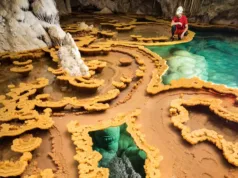Sand Mountain, located in Nevada, USA, is a fascinating and unique natural landmark known for its immense sand dune. This remarkable destination is part of the Sand Mountain Recreation Area, offering a wide range of outdoor activities and a one-of-a-kind desert experience. Here’s an introduction to Sand Mountain, Nevada, including its location, geography, and an overview of the Sand Mountain Recreation Area:
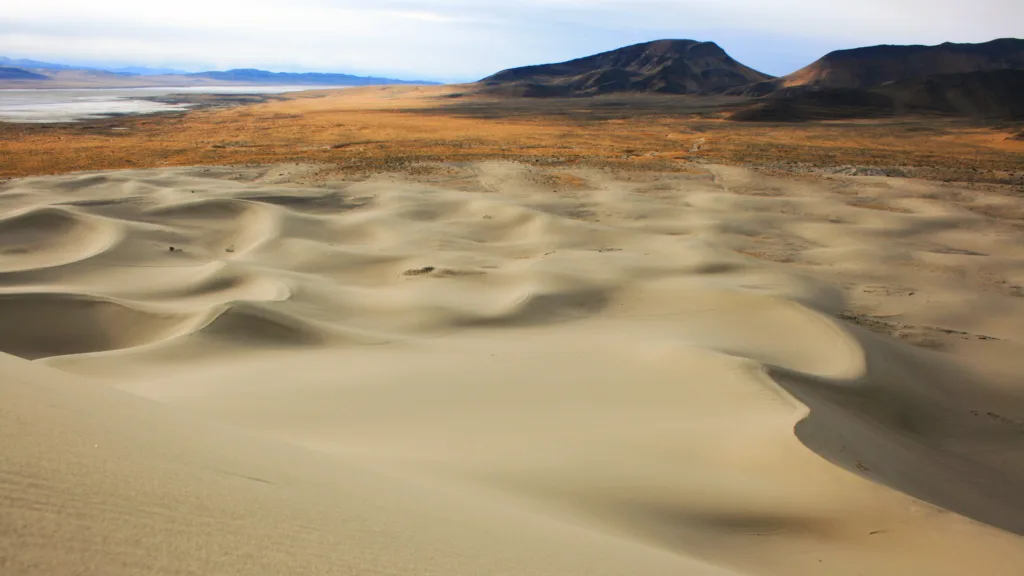
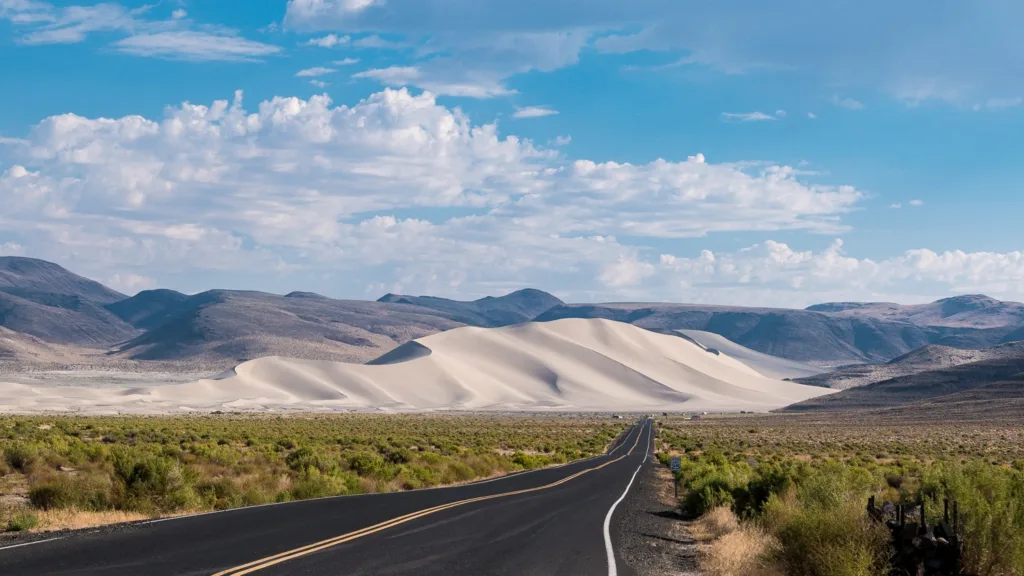
Location: Sand Mountain is situated in the state of Nevada, within the Great Basin Desert region. It is specifically located in the western part of the state, approximately 25 miles east of the city of Fallon. The nearest major urban center is Reno, which is about 100 miles to the northwest.
Geography: The centerpiece of Sand Mountain is, of course, the enormous sand dune that stands out amidst the desert landscape. This massive dune rises to a height of approximately 600 feet and stretches over a length of nearly two miles, making it one of the largest dunes in the United States. The dune is composed primarily of fine sand, which is constantly shifting and changing due to wind and weather conditions.
Sand Mountain Recreation Area: The Sand Mountain Recreation Area is managed by the Bureau of Land Management (BLM) and provides a wide range of recreational opportunities for visitors. Here’s an overview of what you can expect at this unique desert destination:
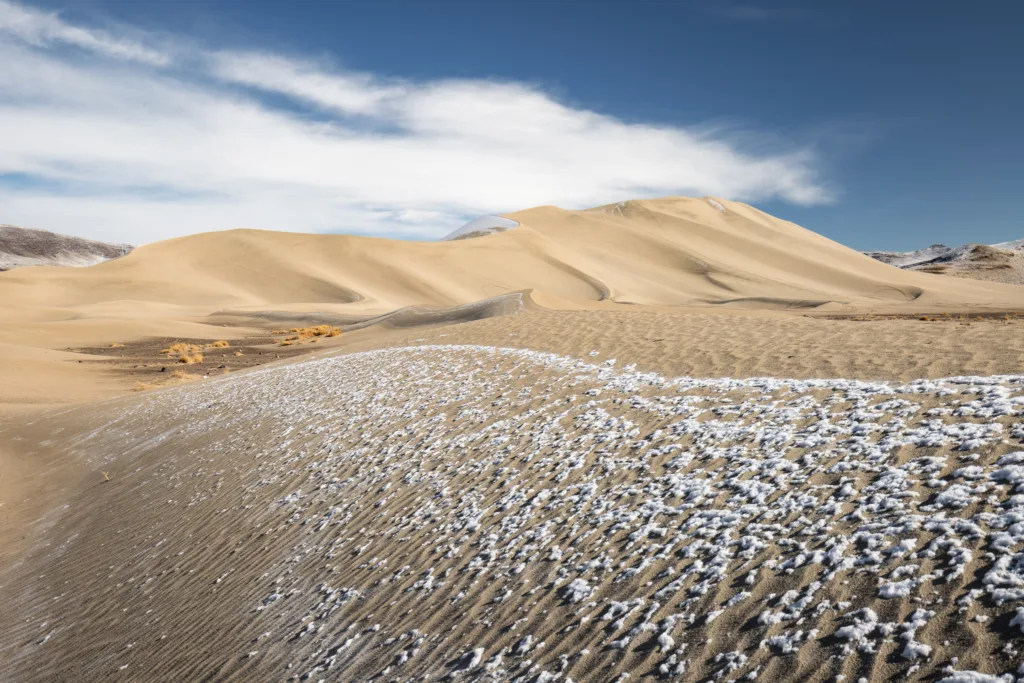
- Off-Highway Vehicle (OHV) Riding: Sand Mountain is renowned for its OHV riding opportunities. The dunes offer thrilling terrain for dirt bikes, all-terrain vehicles (ATVs), sand rails, and other off-road vehicles. The area features designated trails and open riding areas to cater to all skill levels.
- Camping: The recreation area provides camping facilities for those looking to spend more than a day exploring the dunes. Campsites are equipped with amenities such as picnic tables, fire rings, and vault toilets. Keep in mind that the desert can get extremely hot during the day and quite cold at night, so be prepared for fluctuating temperatures.
- Hiking: While the main attraction is the sand dune, there are also opportunities for hiking and exploring the surrounding desert landscape. Visitors can take short hikes to enjoy panoramic views of Sand Mountain and the vast desert expanse.
- Photography and Scenic Views: Sand Mountain offers fantastic opportunities for photographers, especially during sunrise and sunset when the dunes take on striking colors and shadows. The contrast between the golden sand and the clear blue skies creates stunning visuals.
- Seasonal Events: The Sand Mountain Recreation Area occasionally hosts events, including OHV races and competitions, which attract enthusiasts from across the region.
Visitors to Sand Mountain can expect a truly unique and exhilarating desert experience, whether they are OHV enthusiasts, nature lovers, or simply seeking a serene and otherworldly landscape to explore. It’s essential to follow all BLM regulations and safety guidelines while enjoying this remarkable natural wonder to ensure a safe and enjoyable visit.
Geology and Formation
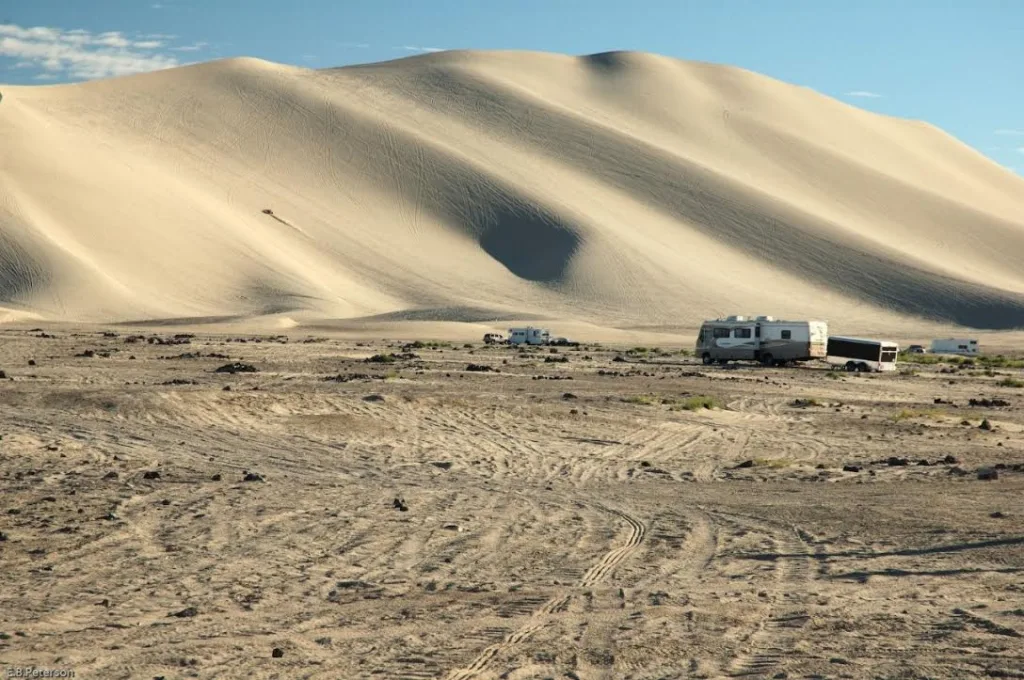
Geology and Formation of Sand Mountain: Sand Mountain, with its massive sand dune, is a remarkable geological feature shaped by a combination of factors, primarily wind and sand deposition. Here’s a closer look at the geology and formation of Sand Mountain:
- Wind Erosion and Deposition: The primary factor in the formation of Sand Mountain is wind. Strong prevailing winds, typical in desert regions, pick up sand particles from the surrounding desert floor and transport them through the air. As the winds lose speed or encounter an obstacle like the Toiyabe Range to the west, they drop the sand particles they carry. Over time, these deposited sand grains accumulate to form a sand dune.
- Shifting Sands: The sand dune at Sand Mountain is characterized by its constantly shifting sands. The dune’s appearance changes as wind patterns and weather conditions alter the shape and composition of the sand. This dynamic nature is a key feature of the area and contributes to its unique charm.
How Sand Dunes Form: Sand dunes like the one at Sand Mountain form through a process known as aeolian (wind-driven) activity. Here’s a brief overview of how sand dunes form:
- Sand Supply: A source of sand is essential for dune formation. In desert regions, this sand typically comes from dry lakebeds, riverbanks, or eroded rock formations.
- Wind Action: Prevailing winds in the area transport sand grains through the air. The wind lifts and carries the sand particles, creating a “saltation” effect where they bounce along the ground.
- Deposition: When the wind loses energy or encounters an obstacle like vegetation or terrain features, it drops the sand particles it’s carrying. This leads to the accumulation of sand in specific areas, gradually building up dunes over time.
- Dune Migration: Sand dunes are not static; they migrate and change shape as wind patterns shift and redistribute sand. This constant movement is responsible for the unique shapes and sizes of sand dunes.
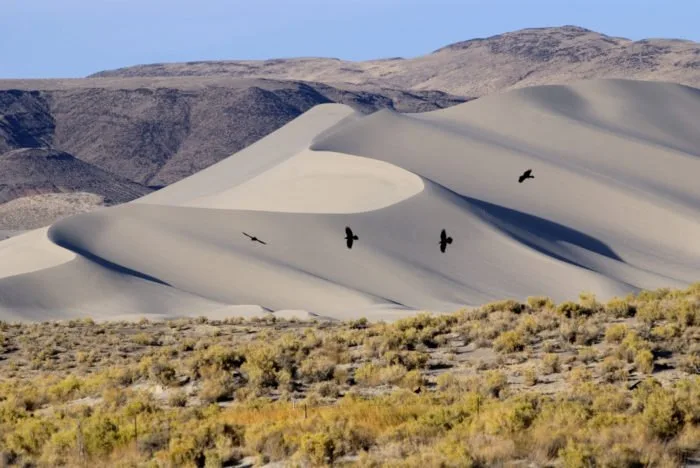
Unique Features of Sand Mountain: Sand Mountain stands out as a distinctive natural landmark due to several unique features:
- Impressive Size: Sand Mountain’s central dune is one of the largest in the United States, rising to a height of approximately 600 feet. Its size and prominence make it a significant attraction for outdoor enthusiasts.
- Constantly Shifting Sands: The dune’s dynamic nature means that its appearance is ever-changing. The shifting sands create a mesmerizing and surreal landscape that captivates visitors.
- Accessibility: Sand Mountain’s accessibility and designated OHV riding areas make it a popular destination for off-road vehicle enthusiasts.
Geological History: The geological history of Sand Mountain is intimately tied to the region’s broader geological history, which is characterized by arid desert conditions, wind erosion, and the presence of sand-rich environments. While specific details about the dune’s formation timeline may not be readily available, it is part of the ongoing geological processes that shape desert landscapes over millions of years.
The Toiyabe Range to the west of Sand Mountain likely plays a role in blocking prevailing winds, leading to the deposition of sand in this specific location. Over time, as wind patterns and sand availability have shifted, Sand Mountain’s dune has grown and evolved into the impressive natural wonder it is today. Understanding the precise geological history would require in-depth scientific research and analysis of the area’s sedimentary records, which may not be readily available to the public.


























